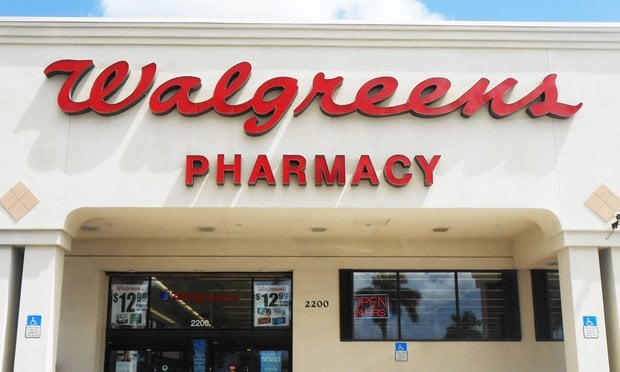 More than 70 percent of consumers would benefit from being in a consumer-directed health plan, but they only work when they are designed correctly. (Photo: Shutterstock)
More than 70 percent of consumers would benefit from being in a consumer-directed health plan, but they only work when they are designed correctly. (Photo: Shutterstock)
During open enrollment, employees are inundated with benefit decisions. Without the right level of health and financial fluency, it can be very difficult for them to evaluate and compare their healthcare options. To eliminate employee confusion this open enrollment season, below we examine the ways that you can empower your employer clients to optimize their communication strategies and maximize employee adoption and satisfaction.
Best practice #1: Start with the right plan design
Consumer-driven healthcare (CDH) has the potential to save employers and employees a lot of money, improve health outcomes, and rein in the spiraling costs of health care. More than 70 percent of consumers would benefit from being in these plans, but they only work when they are designed correctly, with the right funding strategy, education, and communications support. If the plan design is not optimized, even the best open enrollment communication strategy won't deliver desired results.
In another recent article, we looked at best practice strategies for plan design that lead employers to increased adoption of their consumer-directed health plans (CDHPs) and accounts (flexible spending accounts (FSAs), health savings accounts (HSAs), and health reimbursement arrangements (HRAs). Make sure you've referred to and followed these best practices before you begin planning your open enrollment communications.
Best practice #2: Train the trainers
While low consumer health and financial fluency is often a topic of conversation during the open enrollment season, less attention is given to employer knowledge gaps – an issue worth addressing given that frontline HR and benefits staff are the face of these programs to employees. They are the ones fielding employee questions, explaining the benefits of these programs, and helping employees navigate the enrollment experience.
A truly effective open enrollment strategy begins with careful communication planning, ensuring the right support tools and materials are available and that you have 'trained the trainers' to make use of them. It is critically important that HR staff fully understand and are able to articulate the value of these programs; they must tell a consistent story and provide the right examples to reinforce their message. And remember, this training should be more than a massive information dump – employers must be thoughtful about how they teach their HR staff, making time to role play and then test their knowledge.
Best practice #3: Lean on your benefit partners
Effective communication is a key driver of open enrollment success, but most HR departments are extremely resource-constrained and may not consider themselves to be communication experts. The good news is that many benefit advisors and solution providers have invested time and resources into building marketing and communications content, documenting best practices, or even offering dedicated people support to help employers drive program participation.
These libraries of materials were created to drive high adoption rates, target specific employee segments, and help employees make savvier decisions. Check with your benefit partners to understand what resources are available to you and be sure to make full use of them!
Best practice #4: Start early
Most employers operate with a just-in-time strategy, condensing open enrollment communications into only a few weeks. Because most employees have low health and financial fluency, it can be a real struggle for them to even understand the most basic concepts in such a short period of time.
Particularly, if you're dealing with new programs, low adoption, or want to drive big swings in participation, it is critical to start early and communicate well and often. In a perfect world, education should be a year-round exercise, but, at a minimum, employers should begin communicating to employees four to six weeks ahead of open enrollment. As offerings evolve to become more complex and robust, the supporting communication strategies will also need to be enhanced.
Best practice #5: Multimedia works best
Many employers still provide limited tools and support to help their employees navigate open enrollment decisions, and stacks of paper and lengthy plan summary documents may not be the best way to spark interest and make these programs come alive for employees.
The most effective communication plans adopt a multimedia approach and recognize that different employees learn better from different channels. Open enrollment communication plans should employ a variety of strategies that include interactive digital tools, calculators, videos, face-to-face and virtual meetings, and more. These multimedia tools can be supported with a series of timely communications that serve up the right content, at the right time via email, letter, or another method that's customized to the preferences of the employee population.
Best practice #6: Give examples
Most employees have a hard time interpreting benefit options and really understanding how they apply to their specific situations and needs. For example, telling employees that they can save money on premiums and taxes by enrolling in a consumer-directed health plan isn't as powerful as presenting them with a calculator that shows exactly how much they would save and how much they would likely need to pay in premiums and out-of-pocket costs. Until the employee can see the dollars and cents personalized to their specific situation, they may not trust and take the leap of faith to enroll.
Likewise, don't just talk in generalities. Give more personalized examples of how specific types of people can benefit from these programs. Building a handful of personas, or case studies, that reflect large segments of an employee population will help employees envision themselves in these programs.
Bonus best practice: Communicate year-round, not just during open enrollment
The majority of employers only communicate with employees about their health benefits one time per year, during open enrollment. Ideally, education should be a year-round endeavor. Building employee understanding of foundational health and financial concepts throughout the year will prepare them to focus on comparing their options during open enrollment.
Don't forget, for some benefit programs, open enrollment IS a year-round exercise. For example, employees that enroll in an HSA-eligible health plan can open an HSA at any time during the plan year. Employees that do not fully understand the advantages of an HSA during the enrollment period, are unlikely to know this. Don't miss out on opportunities to drive more participation and employee value in these programs!
Jen Irwin is senior vice president of marketing & strategy at Alegeus.
Read more:
© 2025 ALM Global, LLC, All Rights Reserved. Request academic re-use from www.copyright.com. All other uses, submit a request to [email protected]. For more information visit Asset & Logo Licensing.







